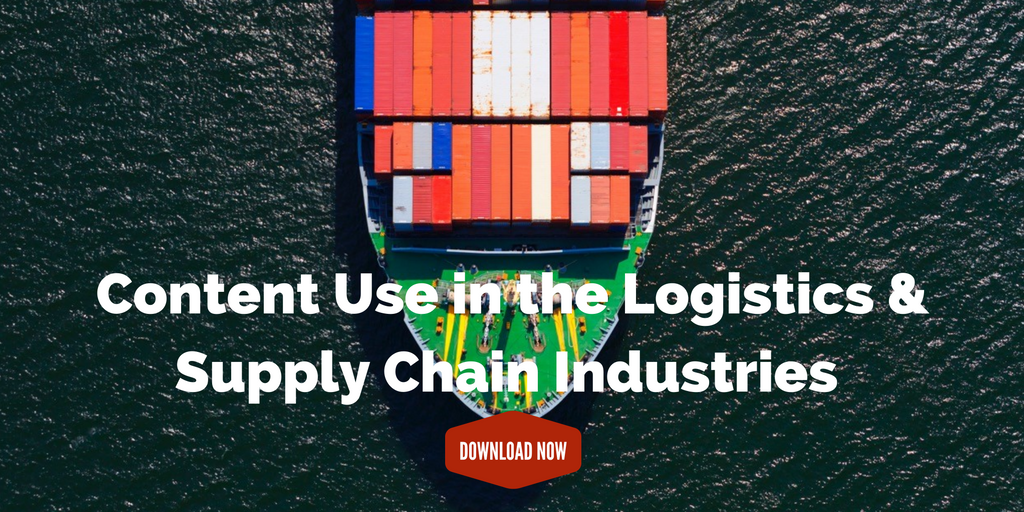
by Fronetics | May 1, 2017 | Blog, Leadership, Strategy
Companies usually try to understand failure, but what could they learn from analyzing their successes, too?
“Success is going from one failure to another without loss of enthusiasm.” Winston Churchill
Failure is said to be inevitable, and we all know it to be true. Any new venture is built on the hope of success. But accepting and managing failure is key to actually obtaining success.
Companies have a responsibility to ask the tough questions when things go awry. We have all been in these meetings: we diagnose failures, and we dissect the process, tools and staff involved to get to the root of the problem. Unfortunately, most companies only step back and really dive into what happened when something bad happens.
But what if companies took the same approach when something went right?
Focusing on the lessons in success
Companies are all a work in process. We learn as we go, and that learning should include understanding our successes. Shifting the focus from ‘what went wrong’ to ‘what went right’ creates a foundation for being able to recreate success in your organization.
Identifying and analyzing the components of a successful process can be the first step in moving into this new mindset. Paul Michelman, editor in chief of the MIT Sloan Management Review, experimented with dissecting his the publication’s successes and quickly discovered that their best processes start with transparency. Michelman wrote:
We plan a pipeline of content that is stored in a document accessible by the key participants. We track each content item’s progress on a shared project management platform. The few times we encounter bumps, a lack of information sharing is almost always at fault.
Though Michelman admits his research is unscientific, the key factors he has identified in their success stories has helped his business focus on what’s working, instead of waiting to dissect failure.
Technology can help
In today’s world, there is no end to the amount of data you can collect on your business. Your company’s digital presence is an easy place to start.
Tools like Google Analytics can give you advanced insight into how prospects are interacting with your company online. You can analyze how people are finding your business, and how they’re moving through your website all the way to making purchases. In other words, you can begin to analyze all of the little successes that make your business turn. How can you replicate that success on new projects and processes?
When things are going well, most companies don’t see the need to reflect on what happened, what went right. But don’t let this opportunity slip by. You should examine failures, but you should also look closely at successes. Take the time to brainstorm with your team on what you’re doing well and how you can keep up that success while you plan for future growth. —
Related posts:

by Fronetics | Apr 27, 2017 | Blog, Content Marketing, Marketing, Social Media, Supply Chain
In April’s social media news, changes are coming down the pike for Google, LinkedIn, Facebook, and Instagram.
April has been an interesting month for social media news. Google, LinkedIn, Facebook, and Instagram all announced changes to their core products that will affect businesses using these platforms for social engagement and/or advertising.
Make sure you’re following our blog and/or social media pages to get our monthly updates on changes that may affect your social marketing program.
Google may be rolling out ad blocker for Chrome
Although its business model largely depends on advertising, Google is considering putting a stop to ads that are ruining users’ experiences. A potential ad-blocking feature on its Chrome browser would identify unacceptable ads based on standards set by the Coalition for Better Ads in March. Google could roll out this new feature in the next few weeks or choose not to move ahead with it at all — either way, the company is declining to comment.
LinkedIn introduces trending storylines
Storylines are now bringing user interests and the most important stories in their industries to the daily newsfeed. The algorithm includes several perspectives, such as “relevant influencers and news publishers to people in your network.” Each storyline also has a unique hashtag associated with it, so users can join in on the conversation and expand their networks based on common interests.
Facebook is moving closer to virtual reality
At the F8 developer conference, Facebook announced the release of Facebook 360 Capture SDK, a toolkit that makes it easier to capture and share virtual reality video. The ‘Book’s engineers are calling this new process “cube mapping,” which is more efficient and has better image quality than standard 360 video. “We look forward to seeing VR 360 selfies, experiences, e-sports, and more—all in 360,” said Facebook product developers in a mid-April blog post.
Instagram launches offline browsing
Instagram currently downloads images on the fly, querying parent company Facebook’s servers for new content when the app is launched. The updated app, however, will tap a cache instead. It will store any browsed images and will automatically update when internet becomes available. Users will also be able to write comments, like and save photos, and unfollow and follow anytime, as Instagram will queue offline actions to execute when next online.
Facebook Stories expands globally
Facebook Stories are short, user-generated picture and video collections that disappear within 24 hours. Users can add different filters and overlays to content using the in-app camera. A simultaneous messenger update, called Direct, allows users to send photos and videos that disappear after a short time to friends. This popular Snapchat-like format has proven very successful on Instagram, which now boasts more than 150 million Stories users across the globe.
Related posts:


by Fronetics | Apr 26, 2017 | Blog, Logistics, Supply Chain, Talent
Investing in your top talent and playing an active role in developing their careers will motivate them to stay around.
Company loyalty is a thing of the past. In today’s day and age, everyone is looking for the next best thing, and that is true in the workplace as well. But this doesn’t mean that retention of top talent is hopeless.
Accenture conducted a cross-industry study and determined the top four reasons employees quit their jobs:
- Lack of recognition (43%)
- Internal politics (35%)
- Lack of empowerment (31%)
- Don’t like boss (31%)
Companies have work to do to create a positive workplace experience, where employees feel challenged and valued. So where do you begin? Retaining top talent can be challenging, but it is possible. Here are three tips for keeping your top talent around longer.
Treat them as individuals
This seems like a pretty basic rule. But if you think about it, top management often gets treated as an elite group. Often times these talented members of your company spend their careers trying to be innovative and cutting edge, so it’s important for them to feel like they are valued and unique. Roger L. Martin, former dean of the Rotman School of Management at the University of Toronto, offers a relevant anecdote:
A top consultant, one of the firm’s 15 or so global account managers, approached me to ask for paternity leave (a benefit that’s now fairly standard, but 20-odd years ago was rare). I readily replied, “Sure. You’re a GAM. At your level, you can do pretty much whatever you want.” He said “OK,” and walked off, looking sullen. I was taken aback: He had asked for something, and I had given it to him. … This consultant wanted to hear: “We care about you and what you need. If paternity leave is the thing that is particularly important to you, we support you 100%.”
Martin witnessed first-hand the effects of treating this manager as part of a class, instead of as an individual. Stepping back and realizing that top talent need to be treated as individuals can add to their feeling valued within your company.
Develop from within
As more money and talent flood into the supply chain, it will be important to avoid the Silicon Valley problem of poaching, or employees leaving for larger salaries elsewhere. Investing in current employees in a meaningful, attentive way could make all the difference.
Think about your rising stars’ futures and next steps within your company. They probably have a plan, and you should as well. Make sure those plans align, and be open to assisting their journey to meet their goals.
Ask specific questions about what it takes to create the environment that would help encourage your talent’s best performance. Ask what works, and also ask what doesn’t work. Be specific and ask what causes your talent anxiety or stress. Investment is a big part of development. It helps talent feel like part of a bigger picture. If you invest in them, they will invest in you.
Encourage flexibility
Gone are the days of strict office hours, and in its place are flexibility and mobility for the workplace.
When companies allow their employees some flexibility, they become happier and more productive. With technology at our fingertips, and all the options that provides, employees expect to work from a location of their choosing, whether it be home, a library, or a coffee shop. Millennials rank this kind of flexibility highly among factors that make companies appealing places to work.
Don’t sit back and assume your employees are willing to be passive about their careers. See your employees as assets. Have a strategy. Be part of their team, and make them part of yours. See their talent and invest in them. Otherwise they’ll find another supply chain company that will.
Related posts:


by Fronetics | Apr 25, 2017 | Blog, Content Marketing, Marketing
Use this checklist to make sure your marketing emails don’t end up in your customers and prospects’ spam folders.
When celebrities make the headlines, it’s normally for far more salacious reasons than a patent award. But for Kevin Spacey and his longtime producing partner Dana Brunetti, that’s exactly what’s got people talking.
The pair was awarded a patent on April 5 for “systems and methods for implementing email delivery,” which Brunetti unveiled on his Instagram account. Essentially, the invention is aimed at providing a way to screen and manage non-authorized emails.
“It allows in only the ones it knows or whoever is on the list,” Brunetti explains. The idea stemmed from Spacey’s frustrations at receiving countless unwanted emails, and being unable to do anything but change his email address.
Spacey’s impulse points to a pervasive issue: We’re all bombarded with marketing emails. But, as a business, it’s one of the most effective ways to reach customers and prospects. How do we make sure our emails are relevant and aren’t just ending up in spam filters?
Are my marketing emails spam?
Firstly, check out our post on making sure your emails aren’t annoying prospects. Then go through this checklist for avoiding spam complaints and unsubscribes:
- Are my emails relevant to my recipient list?
- Am I sending emails at a good cadence?
- Is my email format mobile-friendly?
- Do I have a mobile-friendly landing page experience?
- Do I have an easy opt-out/unsubscribe process to avoid frustrated subscribers?
- Does the unsubscribe link work properly?
- Am I emailing a subscriber who has just had a poor customer experience? (Don’t!)
- Is easy to quickly identify me as the sender?
- Did I include a valid postal address and reply-to email address?
- Are my emails honest? (Am I hiding the commercial character of my email or using false or misleading subject lines or content?)
- Am I emailing people who have opted in to receive my emails only?
- Have I removed all email addresses that have unsubscribed from previous emails?
Follow these best practices — which are, in some cases, international law — and be confident your marketing emails won’t end up in your recipients’ spam folders.
Related posts:


by Fronetics | Apr 24, 2017 | Blog, Content Marketing, Marketing, Social Media, Supply Chain
Your company should consider your ideal customer, your competitors, and your content before choosing which social media channels to use.
Facebook! Twitter! LinkedIn! YouTube! The number of social media channels is astounding – and growing daily. Knowing which your business should be on can be daunting. Here is what to consider when determining which social media platforms you should be using for your supply chain company.
Your ideal customer
Understanding your target audience and which social media platforms they’re using is invaluable information. If you want to reach potential and current customers, you need to be where they are. You need to make it easy for them to find you and engage with your business.
An easy way to obtain this information is simply to ask. A quick email asking current customers where they spend their time online can give you insight into which platforms to use. You can use free tools like SurveyMonkey or Google Forms to create polls that dig a little deeper, too.
Your competition
If your competitors are already active on social media, start by finding out where. If these platforms align with your ideal customer, don’t be afraid to kick start your social media presence alongside them.
Social benchmarking tools like RivalIQ allow you to see where your competitors are active and where they are getting the most engagement. Once you launch a social channel, you can compare your performance to theirs and see where you’re gaining traction and where you can improve.
On the other hand, if your research has shown that your potential customers are using a social media channel that your competitors are not using, don’t assume your competitors know something you don’t. Jumping into any social media channel can be intimidating, but don’t be afraid to branch into new platforms, especially if your research is pointing in that direction.
Your content
It seems almost too simple to articulate, but what do you have to say to potential customers? And how do you plan on saying it? If you are going to invest the time and resources into a social media presence, make sure you’re providing consistent, relevant content in engaging ways.
For example, do you love creating videos and find it’s an easy way for you to demonstrate your company and its value? You should dive into YouTube. Do you have a great workplace culture and hold lots of company events? Try Instagram. Love writing longer thought-leadership pieces about the industry? LinkedIn is probably for you.
The supply chain is all about finding the most effective way to deliver information. Social media is an undeniable channel for distributing this information in a timely manner. Understanding why you’re venturing into social media — and how it can work for your business — can create endless opportunities for your company.
Related posts:









